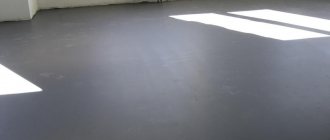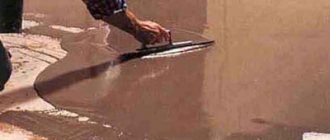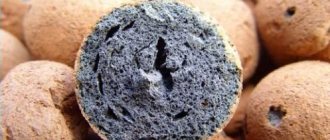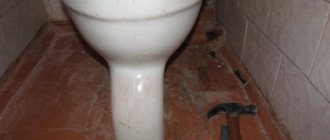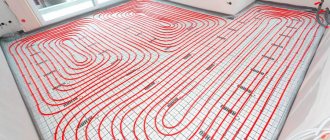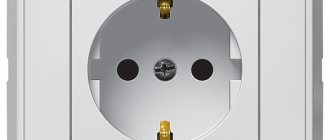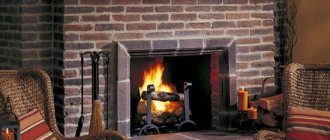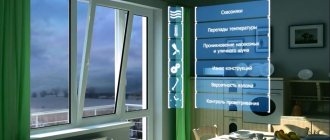One of the key disadvantages of all multi-story buildings is noise, which is everywhere and everywhere. Once in the home, it can serve as the main cause of irritation and interfere with concentrated work or sleep. You can, of course, be original and buy earplugs, but this will not radically improve the situation.
The most effective way is to make high-quality sound insulation. Since sounds often pass through interfloor ceilings, in addition to the walls, much attention should be paid to the floor. Moreover, normal soundproofing of the floor in an apartment is a very feasible task.
Types of noise
The noise that can be heard in the apartment is:
- Indoors - noise from the elevator, slamming doors, voices of neighbors on the landing.
- Indoor – noise from doors opening or closing, the actions of people in different rooms can be heard.
- Indoor noise - this noise depends on the habit of speaking loudly or quietly, or listening to TV.
- Externally - the noise of the city: kids on the playground in the yard, cars, barking dogs on the street.
Good soundproofing of the floor in the apartment will allow you to partially get rid of indoor and intra-apartment noise.
Attention! It is the plank floor that needs sound insulation most of all. The noise of even small children's footsteps is easily transmitted through any wooden structure of the house.
A carpet spread on top of a plank floor will help practically get rid of the noise of footsteps and creaking floorboards. The thickness of such a coating is directly proportional to the degree of sound absorption. In addition, linoleum and cork tiles will help with sound insulation.
Directionality of the effect in sound insulation.
“Sound insulation is effective only “from the noise source” - outward. If you yourself hope to protect yourself from external sources of noise, nothing will come of it at any cost, or they will be scammers (of which there are many).”
This is an example of a standard misconception about the direction of sound insulation (taken from one of the forums), according to the myth, you can isolate yourself from the noise of your neighbor only by performing sound insulation on his side (i.e. on the side of the noise source). Of course, in reality this is not the case: the sound insulation is completely symmetrical relative to the fence, and it doesn’t matter on which side of the wall we build additional soundproofing structures - the effect will be the same!
Nuances worth knowing
- Soundproofing a wooden floor is a much more expensive option than insulating a concrete floor.
- Pipes and cables located under the floor should be insulated with special elastic material.
- Skirting boards must be attached only to the wall, or only to the floor. If you attach it to both the floor and the wall, it will become a bridge for noise.
- When choosing building materials for floor soundproofing, never save money and always look for official certificates for the materials. This will give you the opportunity to avoid any unwanted effects of low-quality building materials on your health for decades.
A little theory
Experts classify any noise as three types:
- air
- drums
- structural
The most common noise is airborne noise
- any street sounds - passing vehicles, the hum of equipment and sounds made by animals and people.
Impact noise
occurs when shocks occur, for example, when hammering nails or moving furniture.
To structural noise
– refer to the sounds of nature penetrating into people’s homes or any other noise spreading through the structures of a house with insufficient noise absorption measures applied during the construction of this house.
The main tasks that soundproofing material must solve are sound insulation and sound absorption. It must either absorb or reflect sound, or better yet, do both simultaneously.
Soundproofing materials usually include dense materials, such as concrete, brick, plasterboard, that can reflect sound.
Sound-absorbing materials include materials that can absorb noise and prevent it from being reflected from an obstacle. Sound-absorbing materials have a fibrous, granular or cellular structure.
The sound absorption characteristics are assessed by the sound absorption coefficient. The sound absorption coefficient varies from 0 to 1. With a zero sound absorption coefficient, sound is completely reflected; with complete sound absorption, the coefficient is equal to one. Sound-absorbing materials include those that have a sound absorption coefficient of at least 0.4.
Scientists believe that people feel very comfortable at a noise level of approximately 25 dB. With a lower value, a feeling of unnatural, “ringing” silence arises, while the person feels some discomfort.
Usually a person reacts normally to noise up to 60 dB; with prolonged exposure to noise of 90 dB, a serious nervous disorder occurs, but a noise level of more than 100 dB threatens hearing loss.
There is now a good selection of materials that can reduce the impact of noise on humans in various life situations.
Porous or fibrous ones that have a high sound absorption coefficient cope with airborne noise. To combat impact noise, elastic materials with a closed cellular structure are used. Structural noise is reduced using cushioning material to protect the joints of load-bearing elements.
Texound
Recently, a new soundproofing material called Texaund appeared on our domestic market.
With a thickness of 3.7 mm, it is considered one of the highest quality sound absorbers. This material is made on a special mineral basis. It is ideal for flooring in a wide variety of living spaces.
Texaund has the following advantages over other soundproofing materials:
- It is elastic and flexible, and also stretches well.
- Its installation is clear and simple.
- Texaund does not react to sudden changes in temperature.
- It is not hygroscopic, not susceptible to rotting and mold formation.
- It belongs to the category of self-extinguishing and low-flammable materials.
- Ideal and easy to install on a variety of surfaces.
- Has an unlimited period of use.
- The material has a high absorption coefficient of sound waves.
The only drawback of Texound is that it must be used in combination with very thin insulation or other material.
Important! That is, in order to achieve maximum effect, it cannot be laid directly on a concrete slab without a special substrate.
Texound installation
How to make sound insulation? When doing soundproofing, you want to achieve the optimal effect. To achieve this, you should act according to the recommendations and instructions given by the manufacturer of the selected material.
Texaund must be laid on a special prepared base. So, any roll or sheet insulation is perfect for it. It can be thin foamed polyethylene - plasterboard, plastic, polyethylene foam or plywood.
If the ceilings are high, and it is also possible to make a thick layer of noise insulation, then mineral wool can be used for one of the components.
- The concrete slab is cleaned with a vacuum cleaner.
- Then the base is laid on it. If it is some kind of elastic material, then it is better to secure it with glue.
Polyethylene foam will only raise the floor by 3-5 mm. The best option is still drywall. This is due to the fact that it will make the floors perfectly smooth and will also cover all the flaws in the slab. This will protect the texaund material from damage. In addition, he himself is a good sound insulator.
Polyethylene foam
After the base is completely ready, coat it on top with special glue, wait 15 minutes, and then carefully lay the texaund, extending 12 cm onto the walls.
When all the material has been laid, you need to use hot air or glue to connect the joints between the sheets. The sheets must create a completely airtight coating, otherwise the soundproofing effect will be reduced.
Then the texaund is covered on top with an additional layer of plasterboard or 10 mm plywood. Without decorative covering, the floors in the room will rise by 23 mm.
Almost any floor covering can be laid on drywall - laminate, carpet or linoleum. It will also create good additional sound insulation. If you increase the number of layers and use modern materials with very different densities for them, the sound insulation of the floor in an apartment under a screed will improve significantly.
Sound insulation materials
When purchasing soundproofing materials, several factors must be taken into account:
- ceiling height in the apartment - with a minimum height, the purchased material must be as thin as possible with a waterproofing film (there will be no increase in the thickness of the screed due to the protective layer from moisture);
- the need for floor insulation;
- type of waterproofing - separate or combined with sound insulation;
- Cost of materials.
Manufacturers present both traditional and modern soundproofing materials on the building materials market, which has significantly changed their classification. All types of materials can be divided into:
- foamed;
- cellular;
- combined;
- fibrous;
- granular;
- bulk;
- layered.
Foam materials are made from polyethylene and polystyrene. Foamed polyethylene (Isoflex, Izolon) has conditional sound insulation, but the low price (55-60 rubles/m2) has made these materials very popular.
Foamed sound insulation.
Foamed polystyrene (“Isoshum”) has a very high level of noise insulation. It is strong and durable. However, there are also disadvantages that limit the number of buyers:
- high price (800-850 rub./m2);
- difficulty in installation.
One of the representatives of cellular sound and heat insulating materials is “Porilex” NPE. This is a new generation material. Consists of low density polyethylene. The honeycomb structure of the material gives it softness and flexibility.
The closed cell system does not absorb or allow water to pass through, which does not require waterproofing work. The service life is 80-100 years. Due to the short period of operation, no negative properties have yet been identified. Price 1 m2 - 100-130 rubles. The cost of the material is affordable for the middle class of the population, especially since there is no additional need for insulation and waterproofing.
Combined materials are represented by rubber-cork and bitumen-cork materials. They have low thermal conductivity and a high degree of noise protection. Service life is 40-50 years. Demand is restrained by the price - 250 rubles / m2.
Fibrous materials cope well with both vibrating and impact sounds. They are installed in houses with high ceilings, as they successfully perform their functions with an insulation layer of 15-20 cm. They are offered for sale with ecowool and cardboard with basalt impregnations.
Disadvantages include short service life and subsidence during operation, which allows them to be used only on wooden floors between joists. The material is in the budget price range - 60 rub.m3.
High sound absorption efficiency of granular materials. They consist of granules of elastic material and a rubber stopper, held together by an acrylic binder. In Russia they are represented by the Shumoplast trademark.
They have advantages:
- reduce impact noise by 24-35 dB;
- do not require waterproofing;
- sags during operation by only 5%;
- level the difference in height of the floor base by 15 mm;
- have a long service life;
- installation does not require special skills.
The disadvantages include:
- long, at least 24 hours, drying period;
- high cost (on average 275 rubles/m2).
Bulk materials are represented by sand and expanded clay. Their level of sound insulation is low, but due to the height of the layer, an acceptable degree of protection against penetrating noise is achieved. This soundproofing option is reliable and does not require large financial investments.
Bulk soundproofing material.
Layered materials, due to their multilayer structure, have the highest level of absorption of sound waves, which is its undeniable advantage . However, they have many disadvantages:
- short service life;
- low moisture resistance;
- high cost (500-700 rub./m2 with a thickness of 3 mm).
Layered waterproofing material.
The layered material is presented by several brands. Zvukoizol is produced in Russia. It is used only in houses located next to constant loud sound (motorway, airfield), where sound waves travel not only through the air, but also along the ground.
Before renovation, many apartment owners visit more than one forum in search of an answer as to what is the best protection against various noises. The diversity of points of view does not make it possible to use a ready-made solution to the problem. Here you need to independently look for answers to questions that arise based on the above advantages and disadvantages of materials, their prices, the need for additional waterproofing, etc.
Important: the material “Soundproofing floors under laminate” examines the advantages and disadvantages of the most popular soundproofing materials: “Foam plastic”, “Tuplex”, “Shumanet 100”, various types of mineral wool, technical and solid cork, etc.
Mineral wool
For insulation and sound insulation, three types of mineral wool are used: stone wool, slag wool, and glass wool. They all have different thicknesses and are produced in slabs or rolls.
Mineral wool can be of very different densities, on which thermal conductivity will completely depend, as well as its ability to withstand various external loads. In addition, this material varies in moisture and heat resistance.
Stone wool
Stone wool is a heat-resistant material that can easily withstand high temperatures up to 550 degrees. This sound insulator is made from fibers obtained from the melting of rocks.
MaxForte EKOplita floor (https://maxforte.ru/maksforte-ekoplita) - high-quality acoustic slabs made of 100% basalt, completely safe PVA glue is used as a binder, that is, the composition does not contain harmful phenol-formaldehyde resins. The slabs are designed specifically for floor soundproofing and provide a high sound insulation index for impact and airborne noise.
The optimal type of stone wool is basalt. This is an environmentally friendly sound insulator and excellent insulation. Another key advantage is that it does not contain binders, namely formaldehyde resin.
Basalt wool, produced in rolls and slabs, can be used for soundproofing work without installing lathing, since the material has a very high density.
Glass wool
This is the most affordable type of mineral wool. True, it is more difficult to install due to the very scratchy fiberglass. Installation should be done with gloves and a special mask on the face, since the hard thin fibers of the material dig into the skin and can get into the respiratory tract and eyes.
Glass wool has a lower density than stone wool and must be laid in the sheathing. This type of material is usually used for non-residential premises, for example, workshops, or for external sound insulation or insulation.
Slag
This type of mineral wool is made from a variety of blast furnace slags. It cannot be used in rooms with high humidity.
In addition, it cannot be used for external work.
The material is hygroscopic and perfectly absorbs moisture, which rapidly reduces its quality. In principle, it can be used for sound insulation by laying it between the lags of the sheathing, but it is not advisable to use it in any residential premises.
Attention! From the characteristics presented above, we can easily conclude that of the three types of mineral wool, only basalt stone wool is ideal for soundproofing the floor of an apartment.
Installation
Installing mineral wool on floors for sound insulation is very simple. It can be made in two ways: using a sheathing made of timber, or without it.
Sound insulation using wooden lathing:
- The very first thing to do when installing soundproofing is to prepare the surface of the base. All debris must be removed from it using a vacuum cleaner.
- After this, if there are cracks in the concrete floor, they should be widened and sealed with cement mortar and these areas should be allowed to harden.
- Next, a thin heat and sound insulator, namely foamed polyethylene, should be laid on the concrete slab.
- If you decide to lay logs, then you need to correctly calculate the step of their installation. It must fully correspond to the width of the mineral wool slabs, so that they fit tightly enough between all the bars.
- The bars are selected to be of the same thickness as the thickness of the soundproofing material. Immediately after marking the floor, special logs are attached to it. They should not be located close to the wall, but at a distance equal to the thickness of the insulation.
- Strips are then cut from basalt mineral wool slabs. The latter are installed around the perimeter of the room, between the sheathing bars and the wall.
- The next stage is laying the slabs between the bars.
- When all the building material has been laid, sheets of plywood are laid on it and secured to the sheathing bars using self-tapping screws.
- If gaps have formed between the plywood sheets, they should be sealed with a special wood putty.
- After the putty has dried, linoleum, laminate or carpet can be laid on the plywood.
- If you want to enhance sound absorption, you can lay a cork covering on top of the plywood, which also has good sound-absorbing qualities.
Do-it-yourself soundproofing without using wooden sheathing:
- A special polyethylene foam is also placed on a well-cleaned floor, which should be secured together with adhesive tape. This material must be applied to the walls to the thickness of the entire soundproofing layer.
- Along the walls of the entire perimeter of the room, strips cut from mineral wool slabs are placed. Their height is about 15 cm.
- Plywood sheets or durable plasterboard are laid on the substrate, almost close to the soundproofing installed on the walls.
- The slab sound insulators are laid close to each other. It is pressed tightly against strips of material that are installed along the wall.
- An additional layer of plywood is laid on top of the mineral wool slabs and is well secured to the floor.
- The protruding part of the sound insulator, which is laid around the perimeter of the room, is cut off flush with the laid sheets of plywood.
- If gaps have formed between the sheets of plywood, they must also be sealed with putty.
- After the putty has dried, you can immediately proceed to installing the decorative floor covering under the laminate.
KNAUF Superpol
Perhaps this is the best soundproofing of a floor under a screed that you can choose on the market today.
Application area
The design allows not only to combat noise, but also to eliminate unevenness in interfloor ceilings with height differences of up to 100 mm or even more. The installation technology does not involve “wet” processes, which makes it possible to carry out work in rooms where cosmetic repairs have already been made.
Advantages
Knauf Superfloor with sound insulation copes well with all types of noise, both airborne and impact.
Relatively low weight of the structure – no significant logistics costs are required.
High speed of installation - in a room of about 20 m2, work is completed within one day.
The presence of a layer of dry backfill with fine-grained expanded clay under the sound insulation allows you to cover utility lines under the screed, saving free space in the apartment.
Flaws
The rather large thickness of the structure – about 150 mm – makes it difficult to use in rooms with low ceilings.
Materials
| Floor elements | Price | Thickness, mm |
| Backfill Knauf 20 | 200 ₽ | 20 |
| GVLV floor | 200 ₽ | 10 |
| Rockwool Florr first layer and side | 200 ₽ | 25 |
| Knauf superfloor 20 mm | 510 ₽ | 20 |
| GVLV floor | 200 ₽ | 10 |
| Consumables with noise (glue, edges, screws, etc.) | 250 ₽ | 0 |
Floating floor
The method of installing a floating floor has nothing to do with water. The set of words, “floor” and “floating”, is formed from the understanding that the decorative layer on the surface is without connection.
If parquet or floor boards are laid on joists, then today's floor installation techniques do not consider the use of nails, screws, or adhesive bases. In this regard, a floating floor creates excellent sound insulation.
Surface preparation
The base for such sound insulation must be level, dry and clean. In this regard, the preparation stage should be taken with great seriousness. The old coating is removed.
The base is checked for height differences. If they are significant, then the base must be leveled. Self-leveling mixtures or a regular cement-sand screed are suitable for this.
Formwork
To prevent the occurrence of acoustic bridges that reduce the effectiveness of sound insulation, the flooring should be insulated from partitions and walls. To do this, temporary formwork made of plywood, plasterboard, or thin boards is installed around the perimeter of the entire room. Its height must necessarily be greater than the floating floor.
Immediately after the screed hardens, all formwork is removed. The resulting gap is filled with polyurethane foam or the remains of soundproofing materials.
Soundproofing material
Sound insulation is laid evenly on the prepared base without cracks or gaps. To minimize waste, installation usually starts from the corner of the room. If necessary, the joints are glued.
MaxForte ShumoIzol (https://maxforte.ru/maksforte-shumoizol) is a thin soundproofing substrate, available in the form of a roll 10 m long, 1 m wide, thickness 4-5 mm. Darnit non-woven fabric is used as a soundproofing layer, providing protection against impact noise up to 27 dB. Also, due to the high-quality bitumen layer, which does not tear or crack during installation, it has high waterproofing properties and is suitable for class “A” houses (luxury housing).
MaxForte SoundPRO (https://maxforte.ru/materialy-dlya-shumoizolyacii-kvartiry/maksforte-soundpro) is the latest material, available in the form of a 1.4 x 5 m roll. Capable of providing a high level of protection against impact and airborne noise, with only 12 mm thick. High performance is achieved due to aluminosilicate fiber laid in a special way. The sound insulation is completely non-flammable, which is confirmed by a certificate.
You can watch the installation video on the YouTube channel Soundproofing MAXFORTE.
Sand-cement screed
Before installing a full-fledged cement-sand screed, it is advisable to lay an oilcloth on the substrate for sound insulation, the edges of which are folded upward, and then glued with tape to the formwork. Beacons 15 mm high are installed on the oilcloth, and a strong reinforcing mesh is installed on top of them.
After this, you need to lay the guides level. These could be, for example, metal profiles. A sand-cement mixture is laid on top, the surface is leveled and rubbed.
Dry screed
To avoid “wet” procedures, it is quite possible to make a dry screed. For this, different sheet materials are used: gypsum fiber sheets, plasterboard, plywood and OSB. These sheets are laid in two layers, securely fastened together with glue.
To avoid the appearance of acoustic bridges, all joints are shifted. If necessary, the surfaces are puttied and covered with a special waterproofing mastic. After this, the floor covering is laid: tiles, parquet boards, laminate, linoleum, carpet.
Layer placement options
With a high ceiling height, it becomes possible to make an effective and thick layer. To improve sound absorption, you can place it both above and below. Modern rolled products are suitable for the upper part. They are distinguished by their rigidity and small thickness. You can lay linoleum, carpet and laminate over them. The base should be quite rigid and motionless, however, it is better to lay tiles or parquet on a harder surface. Porous cement-based mixtures can be used as a base.
Advantages and disadvantages
Despite the fact that foam rubber appeared on the construction markets relatively recently, professional finishing craftsmen often use it for major and cosmetic repairs of residential premises. Feedback from customers who have already tried the new material is only positive. Penolon has proven itself as excellent thermal insulation. This is confirmed by people who lived through the winter period, first without wallpaper backing, and then with it.
The sound insulation of the material was to the taste of those who have cheerful neighbors and families with small children living behind the wall. It was noted that a layer of cellular material significantly reduces the penetration of sounds. Measurements showed an efficiency of 30%.
The advantages of the material are not limited to the listed characteristics. Positive qualities include:
- low moisture absorption (no more than 1%);
- long service life (according to the manufacturer, it is at least 80 years);
- absence of rotting and the impossibility of the appearance of fungal formations;
- resistance to high and low temperatures;
- hygiene and environmental friendliness;
- ability to restore shape after removing loads;
- light weight, which makes work easier;
- resistance to oils, gasoline and other chemicals;
- elasticity;
- strength;
- quite affordable price, that is, accessibility for a wide range of consumers.
Conclusion
Thus, the wealth of solutions for soundproofing flooring allows everyone to choose the best option for their home. Let us remind you that high-quality floor soundproofing is not only protection from indirect noise propagation, but also compliance with the rules of living in an apartment building and respectful attitude towards neighbors.
Sources
- https://obshum.ru/shumoizolyatsiya/pola-v-kvartire
- https://otlichnyjremont.ru/pol/kak-sdelat-shumoizolyatsiyu-pola-v-lyuboj-kvartire.html
- https://www.sdvor.com/articles/zvukoizoliatsiia-pola-etapy-i-prakticheskie-sovety/
- https://zvukexpert.ru/kak-pravilno-sdelat-shumoizolyaciyu-pola-v-kvartire/
- https://HomeMyHome.ru/shumoizolyaciya-pola-v-kvartire.html
- https://pol-spec.ru/pol-v-gorodskoj-kvartire/shumoizolyaciya-pola-v-kvartire.html
4 492
How to estimate the cost of work
The cost of sound insulation depends on its type, the area covered, and the insulation manufacturer.
| Type | Brand | Characteristics | average price |
| Membrane | Texound-70 | Width – 1.22 m, length – 5 m, thickness – 3.7 mm | 1450 rub. |
| MAXFORT-SOUNDPRO | Width – 1.4 m, length – 5 m, thickness – 12 mm | 1100 rub. | |
| Rolled | MAXFORTE SHUMOISOL | Width – 1 m, length – 10 m, thickness – 4 mm | 300 rub. |
| Vibration stack-V300 | Width – 1 m, length – up to 450 m, thickness – 3 mm | 300 rub. | |
| Slab | SCHUMANET | Width – 60 cm, length – 1.25 m, thickness – 5 cm | 260 rub. |
How much the cheapest sound insulation costs can be seen from the table. Inexpensive products include slabs and roll samples.
The budget option is Zvukoizol-M, its cost with a length of 15 m and a width of 1 m is only 190 rubles.
Insulator Characteristics
We talked about the advantages of building materials, one of which is the possibility of application in a wide variety of areas of the construction industry. But a review of the insulator will be incomplete without indicating the technical characteristics. So, let's begin:
- Foamed polyethylene has excellent density - from about thirty to eighty kilograms per cubic meter (depending on the model).
- The thickness of the rolls can be very different - from one millimeter to fifty, which makes it easy to select the right product.
- The range of operating temperatures is also quite wide - the material can be used both at low temperatures of minus sixty and at critically high temperatures of plus eighty.
- The thermal conductivity coefficient is optimal - W/mºС - 0.04.
- Daily water absorption by volume is less than two percent (and in some models even eight tenths).
- Vapor permeability index – mg/mchPa – up to 0.002.
